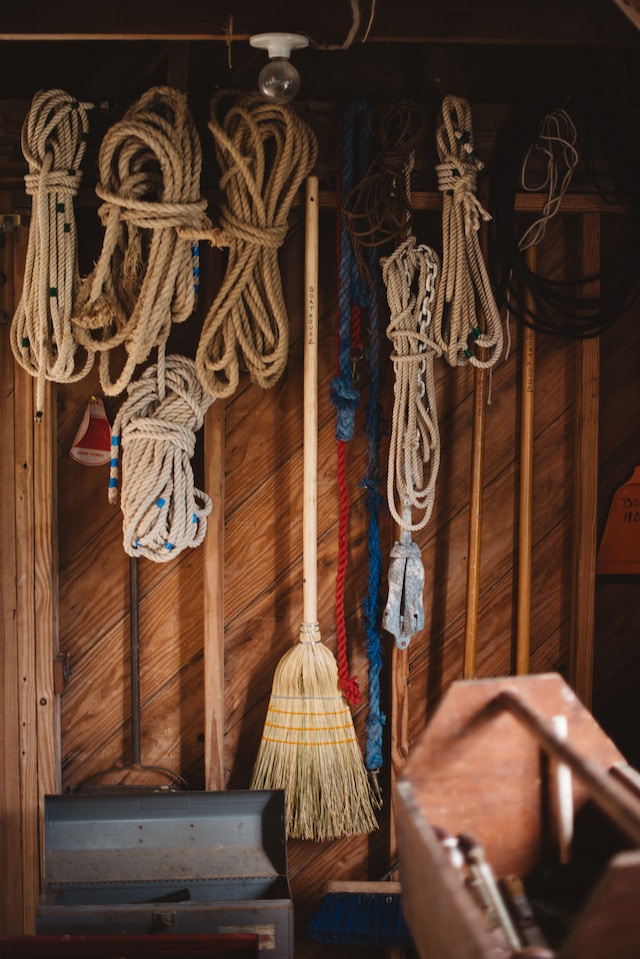Plans for a Storage Shed
Gardening is a wonderful and rewarding pastime, and with gardening comes lots of tools and other supplies. If you are like me, I stumble around my garage trying to get in my car in the morning because I have all my gardening tools and supplies stored in the garage.
A garden shed is a must for all gardeners because it is a great way to keep all your garden tools and supplies in one place, and out of your garage or basement.
Building a shed in your backyard can be an economical and easy way to solve this problem, while also adding value to your home.

What are Some Common Shed Sizes?
Without plans for a storage shed, your building project can turn into a serious mess in a hurry! So, it is important to determine the size shed you will need.
Common sizes for sheds range from 4×4 feet up to 10×14 feet or larger. A 4×4 shed will be able to fit a couple of lawnmowers and some hand tools, while a 10×14 can hold a riding mower, garden tiller and several large storage bins.
Knowing the size of shed you need will help narrow down the type of shed plan or kit that would work best for your needs.
What You Should Consider Before Building a Shed
When building a shed in your backyard, there are some important factors to consider. Here are some of the things you should think about:
Your Shed Plans Should be Created by an Expert
When building a storage shed there are many factors that need to be considered such as size, materials, and the cost of construction.
Save yourself some headaches and take advantage of an expert’s knowledge. They will be able to help you with budgeting, zoning regulations, and the overall design of your shed.
To make your building project more productive and enjoyable, you should look for a company or a contractor who specializes in shed construction or other outdoor building projects. They will be able to provide you with the best advice and ensure your project is done correctly.
Your Shed Plans Should Have Detailed Drawings and be Easy to Follow
The shed plans you choose should include detailed drawings that are easy to follow and understand. The plans should also provide helpful hints and tips on how to get the best material for your budget, as well as proper building techniques.
Installation of windows and doors is often a tricky part of shed construction, so make sure the plans you purchase include step by step instructions for these activities. Additionally, the plans should include a list of materials and tools necessary for construction.
Finally, make sure that the shed plans you purchase are designed to meet local building codes and regulations. This may require obtaining a permit before beginning your project, so be sure to check with your local building department.
Your Shed Plans Should Come with a Complete Materials List
With every shed plan, you should also get a complete list of materials and tools necessary to build your shed. This will ensure that you have all the pieces needed for construction, which can save time and money in the long run.
The material list should include everything from lumber and roofing materials, to nails and screws. When purchasing the supplies, be sure to check with local home improvement stores or lumberyards to get the best price.
With detailed shed plans, a complete materials list and expert advice your next shed project can be an enjoyable experience. After following these simple tips, you’ll have a place to store all of your garden tools and supplies that will last for years to come.
These shed plans even come with instruction on suggested roofing materials and construction, which my friend, John, over at FNC Roofing Pros, says is a big plus.
Your Shed Plans Should Provide You with Options
Finally, your shed plans should allow for options. Maybe you want your shed fancier than the base shed plan. Or maybe you want to have a specific style of window or door. Make sure the plans offer the ability to customize your shed.
Also, consider the roofing options you have. Metal roofs are more durable and require less maintenance, but they may be more expensive up front. Shingle roofs are less expensive initially, but may require more maintenance over time.
These tips will help you choose shed plans that meet your needs and budget so you can get started on building a great shed for your backyard!
Your Plans for a Storage Shed Should be Affordable
I know, I know, if you are like me, you want it all but don’t want to spend a fortune. That is why I suggest looking around at different shed plans that are available and finding one that meets your needs and budget.
Many online stores offer great deals on shed plans, so take some time to compare prices and find the right plan for you. You should also check with local hardware stores and lumber to see if they offer any discounts on materials.
By taking this extra step you can save money without sacrificing quality or function. With the right shed plan, you will be soon enjoying your beautiful garden shed while storing all of your gardening tools and supplies in one convenient location!
Choosing Materials for Your Shed
Now that we’ve gone through all the steps involved in picking out your shed plans, it’s time to talk about choosing materials. It’s important to select materials that are durable, long lasting, and aesthetically pleasing.
The materials used to construct a storage shed should be of high quality, durable, and designed to last for many years. Some popular options include wood, metal, vinyl, and plastic. Each material has its own advantages and disadvantages depending on your particular needs.
For example, wood is the most popular material used in shed construction due to its natural beauty, affordability, and customizability. However, it does require more maintenance than other materials such as metal or vinyl.
Vinyl sheds are also a great option because they are extremely durable and require minimal maintenance. Plastic sheds, on the other hand, are lightweight and can be easily moved around your garden or yard if needed.
No matter which type of material you choose for your shed, make sure it meets all local building codes and regulations in order to ensure its safety. Once you’ve done this, you’ll be ready to start building your shed and enjoying the extra storage space it provides!
Purchasing Your Building Materials
Once the plan is finalized, it’s time to purchase the building materials. It is important to buy high-quality materials so that your shed will last as long as possible. Be sure to compare prices and look for the best deal available.
I recommend purchasing materials from a local hardware store or lumberyard rather than buying them online, as you can save money this way. Additionally, local stores often offer discounts and sales that aren’t available online.
Finally, be sure to double-check the measurements of your materials to make sure you have enough for the project. It is also important to purchase extra material in case any mistakes are made during construction.

Maintenance Tips
Once you’ve completed your shed project, it’s important to take the necessary steps to ensure its longevity. Regularly inspect the shed for any signs of wear and tear, such as cracks in the walls or damage on the roof.
If necessary, seal any exposed wood with weatherproofing sealant or paint. Additionally, inspect and clean all hardware, such as door hinges and locks, to make sure everything is functioning properly.
If you have a bigger shed and would like use it to store lawn equipment, you might want to consider investing in a shed ramp. This will make it easier to move heavy items into and out of the shed.
Finally, regularly clean the inside and outside of your shed to keep it looking its best. Sweep away dirt and debris, and use a water hose or bucket of warm soapy water to wash down any exterior surfaces.
These simple maintenance tips can help ensure your shed stays in top shape so you can enjoy it for many years. With a little bit of care and attention, your shed will provide you with secure storage space for all of your gardening or outdoor supplies.
In Conclusion
Once you have your plans and materials, don’t forget to check with local building codes so that you can be sure your project meets all safety requirements.
This will help protect your family as well as provide a safe and secure environment for storing all of your gardening tools and supplies.
Then, enjoy the satisfaction of building your own shed and having a great outdoor storage solution that you can use for many years to come. Good luck!